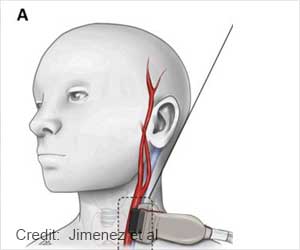A program that consisted of patients measuring their blood pressure and adjusting their antihypertensive medication resulted in lower systolic blood pressure.

Data from national and international surveys suggest that despite improvements over the last decade, significant proportions of patients have poor control of their elevated blood pressure. Self-monitoring of blood pressure with self-titration (adjusting) of antihypertensives results in lower blood pressure in patients with hypertension, but there are no data about patients in high-risk groups, according to background information in the article.
Richard J. McManus, F.R.C.G.P., of the University of Oxford, and colleagues randomly assigned 552 patients with hypertension and a history of stroke, coronary heart disease, diabetes, or chronic kidney disease to self-monitoring of blood pressure combined with an individualized self-titration algorithm or a control group (patients received usual care consisting of seeing their health care clinician for routine blood pressure measurement and adjustment of medication if necessary).
After 12 months, the average systolic blood pressure decreased in both groups, but was lower in the intervention group (128.2/73.8 mm Hg vs 137.8/76.3 mm Hg). Imputation for missing values showed a marginally lower average difference in systolic blood pressure of 8.8 mm Hg. The reduction in diastolic blood pressure was also greater in the self-monitoring group. The results were comparable in all subgroups, without excessive adverse events.
"This trial has shown for the first time, to our knowledge, that a group of high-risk individuals, with hypertension and significant cardiovascular comorbidity, are able to self-monitor and self-titrate antihypertensive treatment following a prespecified algorithm developed with their family physician and that in doing so, they achieved a clinically significant reduction in systolic and diastolic blood pressure without an increase in adverse events," the authors write. "This is a population with the most to gain in terms of reducing future cardiovascular events from optimized blood pressure control."There is also an accompanying editorial, titled, 'Self-titration of Antihypertensive Therapy in High-Risk Patients Bring It Home.'
"Although the trial by McManus et al does not settle all questions regarding self-titration based on self-measurement, it is an important step toward adaptation of treatment for patients who want to actively take part in their own risk-factor control," write Peter M. Nilsson, M.D., Ph.D., of Skane University Hospital, Malmo, Sweden, and Fredrik H. Nystrom, M.D., Ph.D., of Linkoping University, Linkoping, Sweden.
Advertisement
"Based on these findings, a 'bring it home' blood pressure-lowering strategy appears suitable for patients with hypertension and comorbidities."
Advertisement















